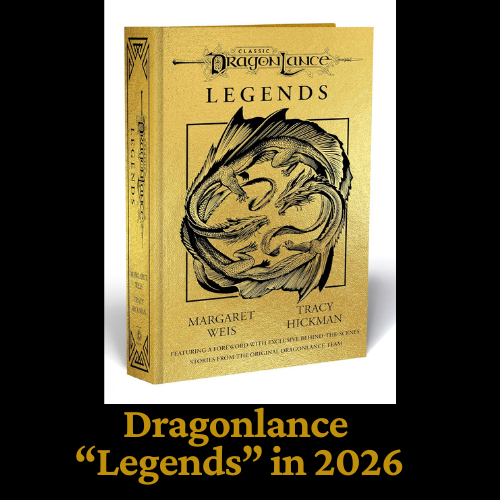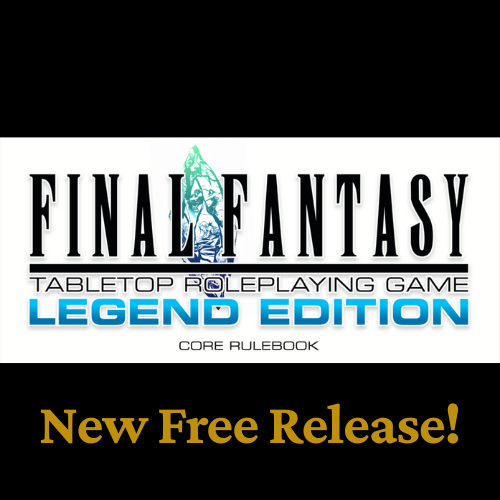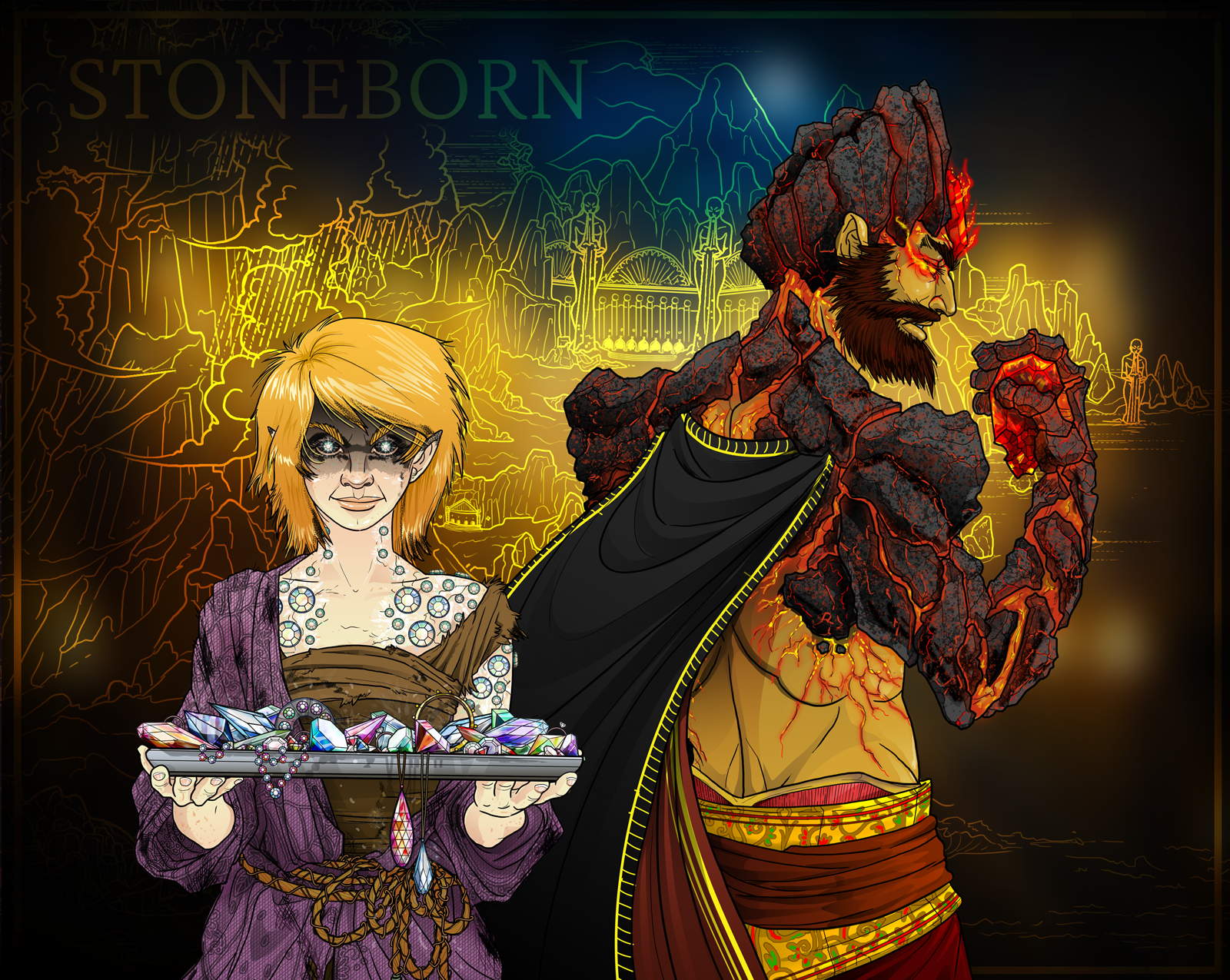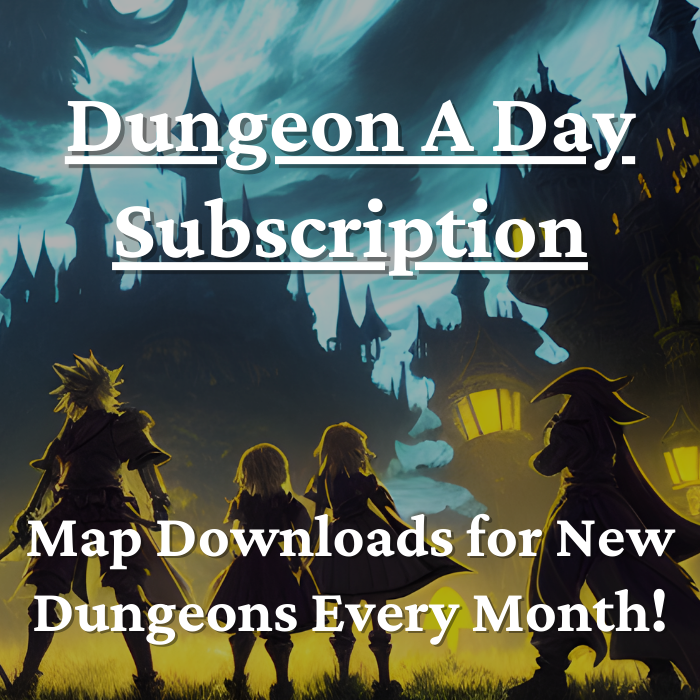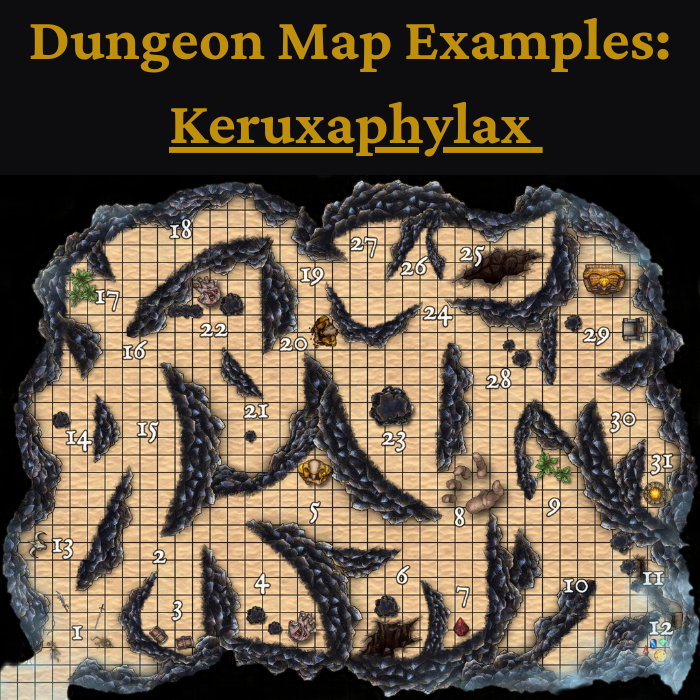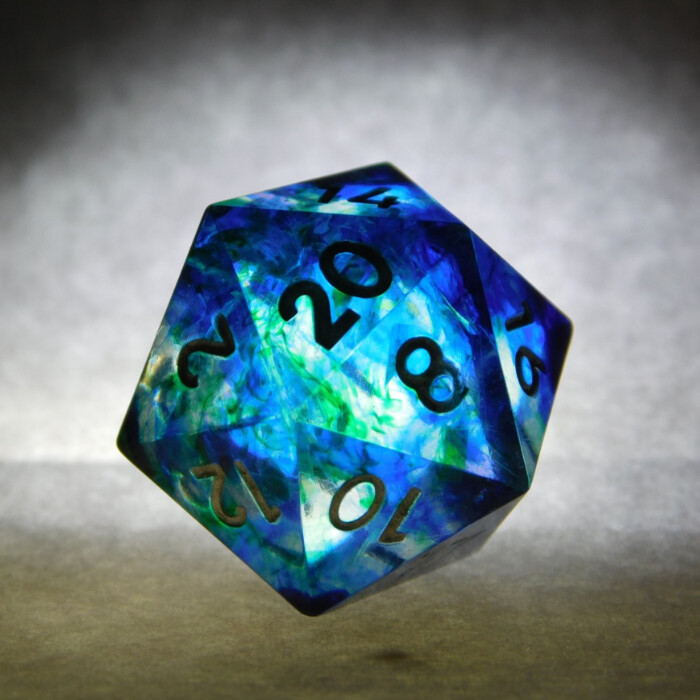Home > TTRPG Reviews
DnD 5th Edition Reviews
This set of DnD 5th Edition reviews is part of my “Best Tabletop RPGs of All Time” article. If you want to check out more TTRPGs and see how other top-tier tabletop RPGs are ranked, visit that page.
My Review – 95 / 100
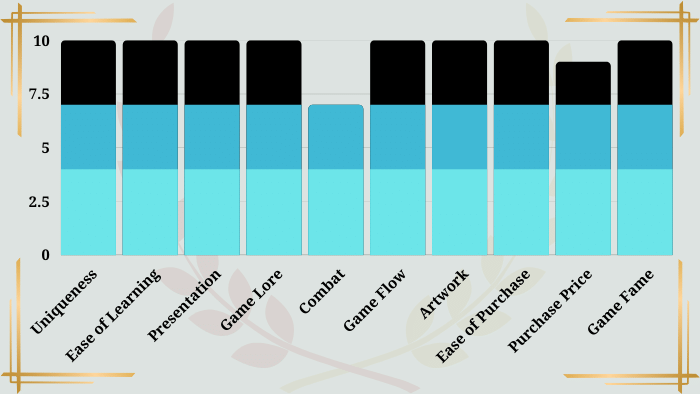
Dungeons and Dragons gets a shorter review than many of the games in the list of best tabletop RPGs of all time in part because DnD is by far the best. Dungeons and Dragons is the definition and standard for all other tabletop RPGs. That’s all there is to it.
Even the things that aren’t perfect about the game are still far superior to most every other game out there. And though DnD isn’t the absolute best game out there in every category, they are the best, overall.
Dungeons and Dragons isn’t a perfect game, but it’s pretty close. As close, in fact, as a TTRPG can be in today’s world. Even though I have my own TTRPG (Eternity TTRPG), I still have to say that overall, Dungeons and Dragons is better.
DnD has been around longer than any modern RPG, it’s the most popular tabletop RPG in the world, the artwork’s incredible, the game has countless thousands of playtest hours, some of the most creative game designers in the world work for Wizards of the Coast, etc. There's even an entire genre of products out there specifically labelled as DnD gifts. Dungeons and Dragons is just that huge.
I haven’t met many people who don’t like DnD. There is some hype around the game, and it certainly benefits from brand name recognition. But there’s a reason that it’s the most played RPG out there. If you’re new to tabletop gaming, or just want one gamer’s honest DnD 5th edition reviews, you’ve come to the right place.
If you’re someone who doesn’t love DnD, head back to the “Best Tabletop RPGs of All Time” article There are plenty of great tabletop games out there that play very differently than DnD.
How Unique is DnD 5th Edition: (10/10)
DnD may not seem like a very unique game when compared to other tabletop or video game RPGs but that’s only because they created the gaming systems upon which almost every TTRPG and video game RPG is built.
Trust me, DnD is unique. That’s why it’s still around. Just look at 90% of the other TTRPGs on the market today. They all emulate Dungeons and Dragons in one way or another. It’s realistic to say that other tabletop RPGs are “like DnD but with a twist.” If anything, other games are less unique because they almost always use at least one major section of ideas from DnD.
How Easy is it to Learn DnD 5th Edition: (10/10)
DnD isn’t the easiest tabletop RPG to learn. But this is also where momentum comes in. There are so many people playing DnD on a regular basis that if you’re new to the game all you have to do is ask someone at your gaming table what to do in any given scenario, and someone will know the answer. You basically don’t even need to learn the game in order to play, so long as you have people to play with.
There are also so many cool things to learn and do in DnD that chances are high you’ll find something in the game that you really love in the game, you’ll get sucked in, and then you’ll end up studying on your own anyways so that you can do even more of what you love.
After a little while of study, you’ll thereby become another asset to your entire gaming group for bits of knowledge from which other new people can learn.
5th Edition Presentation: (10/10)
DnD sets the standard for tabletop RPG rulebook presentation and organization. The books are easy to read, engaging, and to-the-point. Wizards of the Coast presents top-notch writing, editing, graphic design, and placement of all gaming and instructional material.
The DnD 5th edition core rulebooks are indeed their own form of artwork.
If you aren’t familiar yet, by the way, you soon will be. DnD basically coined the term “d20,” which refers to a 20-sided dice. Having a full array of gaming dice is basically part of the fundamental DnD presentation. If you need dice, check out my article on the Best D&D Dice out there.
Eternity TTRPG Top Sellers
DnD Lore: (10/10)
DnD has tons of lore. Expansions on core rulebooks, supplemental material, pre-made adventures, entire pre-made RPG campaigns, endless numbers of novels, videos, podcasts, video games, websites, maps, and entire books of lore. Really, there’s more lore to the various campaign worlds of DnD than you could probably ever play through.
Every campaign world in DnD has an immersive setting. Every town, NPC, magic item, and villain is available for you so that you don’t have to create your own stories if you don’t want to. Or alternatively, you can use existing lore as a foundation upon which to build your own gaming world.
Combat in DnD 5th Edition: (7/10)
Combat is one of the areas of DnD 5th edition that I don’t love. To be honest, I’ve never really loved DnD combat in any edition, and I do think there are other games out there that have better combat systems.
5th Edition is similar to 3.5 edition (yes, 3.5 edition). 4th Edition tried emulating video game combat, but I think did so pretty poorly. Where the game lies now is probably the best that combat in DnD has ever been. It’s just that DnD combat is not all that exciting to me, and it still feels like it lacks depth.
When I say that combat lacks depth, what I mean is that even with 5th edition, there’s a lot of “roll to hit,” then “roll for damage” going on. I wouldn’t consider a straightforward attack action on every turn a very tactical or in-depth game.
Also, not all classes are equal in combat, and there aren’t always a lot of unique things to do in combat too, depending on which class you play. I think that’s a bummer. Designers have gone a long way towards improving this problem, but it’s still true that wizards kill everything at high levels of play, and wizards have 10x more options than other classes (because of all their spells). Other classes make up for that with skill points and such, but to me that still doesn’t quite cut it.
Most classes do have unique attacks, powers, or spells. But if we’re comparing their repertoire to something like the attacks, powers, and spells available to classes in World of Warcraft or other top-tier video game RPGs, the classes in DnD are boring by comparison.
If you’re very creative as a player, you can always make up unique actions for your character to perform. But the game itself doesn’t provide a lot of interesting things to do beyond just attacking.
I do really like the advantage/ disadvantage mechanic in DnD 5th edition. It’s a nice improvement over previous editions that adds new dynamics to combat.
I will admit that I also love making full attack actions and rolling multiple attacks in a single round, spilling dice all over the table. At the end of the day though, DnD combat can become a grind. I attack the enemy. Enemy attacks me. My turn? Ok, I attack the enemy again… I simply wouldn’t want to do an entire gaming session in DnD that’s based on combat.
This isn’t a new critique – people have been saying it for years. Don’t get me wrong – there’s certainly drama combat in DnD, especially with a great dungeon master. But I just feel that battles in DnD lack something that keeps combat feeling fresh and engaging.
Game “Flow”: (10/10)
You don’t even need a great dungeon master for DnD to be a great game, and to get into the “flow” of the game. Even a totally new group can still have fun gaming.
For comparison, many TTRPGs do not have the same level of strength in this area. Many games have (overly-detailed) rules which can easily slow down the game. Many games are also heavily reliant upon the dungeon master (or game master) to keep the story running.
Granted, DnD groups do benefit from having a great dungeon master. It’s just that even new dungeon masters can make terrific games for their players because DnD is such a solid game system.
Also, there are plenty of great
dungeon master tools for DnD available to help anyone who wishes to grow their skills as a dungeon master.
DnD Artwork: (10/10)
Dungeons and Dragons has amazing artwork. I love the artwork in DnD. They set the standard for all other TTRPG artwork. If for any reason, you’re not familiar with the quality of artwork DnD provides, just check it out on any search engine.
The other great thing is that DnD has phenomenal artwork in everything they produce, from core rulebooks to supplemental material. Literally, the best artists in the gaming industry regularly complete work for Dungeons and Dragons.
Ease of Purchase: (10/10)
The Wizards of the Coast website looks great and is easy to navigate. Also, all DnD books are easily found on Amazon. Even if you know nothing about DnD (including what books to purchase) you can find that information without hardly any effort.
By the way, if you don’t know what to purchase, here you go:
- Dungeons and Dragons 5th Edition Player’s Handbook (ideally, every player at the gaming table should have one)
- Dungeons and Dragons 5th Edition Monster Manual (at least one person at the gaming table should have one)
- Dungeons and Dragons 5th Edition Dungeon Master’s Guide (whoever is going to “lead” the gaming group should have one)
Also, if you’ve never used one, a DnD campaign planner can be a big help for any Dungeons and Dragons enthusiast.
Note that it’s also possible to play single player DnD if you have all of the core rulebooks.
Price & How Many Books Do You Need to Play: (8/10)
This is another downside of DnD. I will say though that it is in fact a small downside.
You’re looking at $150 for hardcover copies of the Player’s Handbook, the Dungeon Master’s Guide, and the Monster Manual – all of which you need to play DnD. Wizards of the Coast for sure knows how to monetize their products.
The thing is though, the artwork, production value, game system, and legacy of Dungeons and Dragons are so great that the price they charge is perfectly reasonable.
The reason that the price really isn’t so bad, too, is that players can also share the cost of the DnD core rulebooks, if it’s a bit expensive for anyone at the table.
If you have a 5-person group, you’re looking at $30 each. It’s not the cheapest tabletop RPG on the market. But I do believe DnD delivers value for its price. And even at $150, DnD is still a hobby far less expensive than many.
Fame & Availability of Supplemental Material for DnD 5th Edition: (10/10)
No TTRPG is more famous than DnD, and no other game has as much supplemental material for literally endless gaming. You can find a DnD setting for virtually any kind of gaming experience you’d like.
There are official settings made by Wizards of the Coast, independent settings produced by a host of game designers and writers, and unofficial settings all over the internet that would be honored if you used their material.
Speaking of, check out my article on DnD quest ideas.
The bottom line is that you aren’t played Dungeons and Dragons on a regular basis, but you’d like to, you’ll have no problem at all finding a regular gaming group for an ongoing RPG campaign.
Dungeons and Dragons is Produced By:
